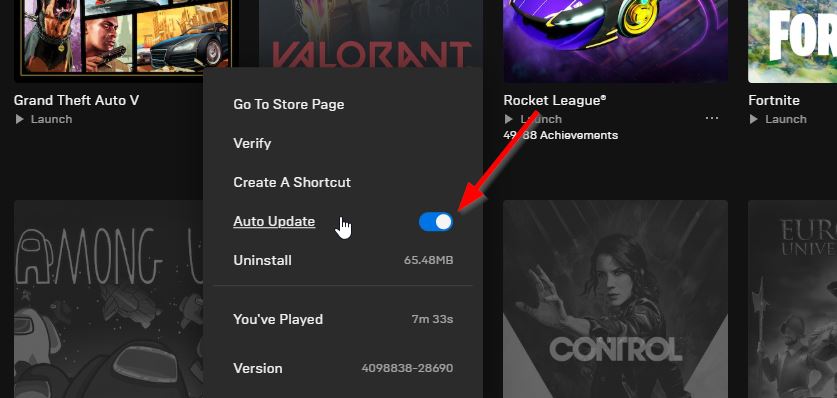Star Wars Jedi: Survivor, a thrilling action-adventure game, serves as the highly anticipated sequel to Star Wars Jedi: Fallen Order. Developed by the renowned Respawn Entertainment and published by Electronic Arts, this captivating gaming experience is available on multiple platforms, including PlayStation 5, Windows, and Xbox Series X/S.
The game requires enough hardware configuration to run properly, especially for PC. Not everyone may have such a configuration to run the game in full resolution and higher FPS. It’s quite common for most PC titles because they’re performance-hungry. Here we’ve provided steps to fix STAR WARS Jedi Survivor Stuttering and Lags issues.
Unfortunately, some STAR WARS Jedi Survivor PC players are experiencing multiple issues like stuttering, lags, crashes, frame drops, etc., while in gameplay. Depending on the compatibility factor, it can be a severe issue on some PCs. So, it’s always better to fix the issue so that at least you can play the game with a respectable FPS count. There may be several reasons behind such an issue that can be resolved by following this guide.

Check System Requirements
Check out the system requirements of STAR WARS Jedi Survivor game below to ensure that your PC configuration meets the game’s system requirements.
Minimum Requirements:
- Requires a 64-bit processor and operating system
- OS: Windows 10 64-bit
- Processor: 4 core / 8 threads | Intel Core i7-7700 | Ryzen 5 1400
- Memory: 8 GB RAM
- Graphics: 8GB VRAM | GTX 1070 | Radeon RX 580
- DirectX: Version 12
- Network: Broadband Internet connection
- Storage: 155 GB available space
Recommended Requirements:
- Requires a 64-bit processor and operating system
- OS: Windows 10 64-bit
- Processor: 4 core / 8 threads | Intel Core i5 11600K | Ryzen 5 5600X
- Memory: 16 GB RAM
- Graphics: 8GB VRAM | RTX2070 | RX 6700 XT
- DirectX: Version 12
- Network: Broadband Internet connection
- Storage: 155 GB available space
Also Read
Fix: STAR WARS Jedi Survivor Stuttering and Lags Badly
Fixing in-game lags or frame drop issues isn’t easy because it depends on multiple factors such as PC hardware, the display resolution of the game, maximum FPS limit count, conflicting third-party apps, and more. So, we recommend you try following all the methods one by one until the problem gets fixed or reduced. Mostly changing the in-game graphics-related settings or keeping them low can fix several problems in a jiffy.
It may include the Screen Resolution of the game, in-game Texture Resolution, Shadow Resolution, Maximum Frame rate, number of Characters Displayed, or other visual effects that require higher graphics or memory. So, you can follow the steps below to try reducing the lags or frame drops up to some extent depending on which resolution and quality you’re playing the game apart from FPS count.
1. Use Launch Options
- Open your Steam client > Go to Library > Right-click on STAR WARS Jedi Survivor.
- Select Properties > On the General tab, you’ll find Launch Options.
- Enter the launch options -fullscreen = Forces the engine to start in fullscreen mode.
2. Update Graphics Drivers
- Right-click on the Start Menu to open up the Quick Access Menu.
- Click on Device Manager from the list.
- Now, double-click on the Display adapters category to expand the list.
- Then right-click on the dedicated graphics card name.
- Select Update driver > Choose Search automatically for drivers.
- An update will automatically download and install the latest version if available.
- Once done, make sure to reboot your computer to change the effects.
Also Read
Fix: STAR WARS Jedi Survivor Keeps Crashing on Startup on PC
STAR WARS Jedi Survivor Save File and Config Location – Where exactly is it located?
Fix: STAR WARS Jedi Survivor Not Using GPU
Jedi Survivor: How to Find and Defeat Masi Finau, Fenn Finau, and Cleo Bounty
Fix: Star Wars Jedi Survivor Achievements Not Working or Not Unlocking
3. Run the game as an administrator
Make sure to run the game exe file as an administrator to avoid user account control regarding privilege issues. You should also run the Steam client as an administrator on your PC. To do this:
- Right-click on STAR WARS Jedi Survivor exe shortcut file on your PC.
- Now, select Properties > Click on the Compatibility tab.
- Make sure to click on the Run this program as an administrator checkbox to checkmark it.
- Click on Apply and select OK to save changes.
4. Set High Priority in Task Manager
Make your game priority in the higher segment via the Task Manager to tell your Windows system to run the game properly. To do this:
- Right-click on the Start Menu > Select Task Manager.
- Click on the Processes tab > Right-click on STAR WARS Jedi Survivor game task.
- Select Set Priority to High.
- Close Task Manager.
- Finally, run STAR WARS Jedi Survivor game to check for the issue.
5. Verify the Integrity of Game Files
If there is an issue with the game files and somehow get corrupted or missing, then make sure to perform this method to check for the issue easily. To do so:
For Steam Users:
- Launch Steam > Click on Library.
- Right-click on STAR WARS Jedi Survivor from the list of installed games.
- Now, click on Properties > Go to Local Files.
- Click on Verify Integrity of Game Files.
- You’ll have to wait for the process until it gets completed.
- Once done, just restart your computer.
For Epic Launcher:
For EA Client:
To verify game files on the EA App (formerly known as EA Desktop and Origin), follow these simple steps to ensure your game is running smoothly:
- Launch the EA App on your computer.
- Sign in to your EA Account.
- Navigate to your game library by clicking on the “My Collection” tab.
- Locate the game you want to verify the files for.
- Right-click on the STAR WARS Jedi Survivor game tile, and select “Repair” or “Verify” from the context menu that appears. The exact wording may vary depending on the version of the EA App you are using.
- The EA App will then begin the verification process, checking for any missing or corrupted files in your game installation. The app will automatically download and replace the problematic files if any issues are detected.
- Once the verification process is complete, you’ll receive a notification. You can now launch your STAR WARS Jedi Survivor game and enjoy a seamless gaming experience.
Remember that verifying game files is an excellent troubleshooting step if you encounter issues such as crashes, performance problems, or missing content.
6. Change GPU Settings
Make sure to change the graphics card settings on the PC by following the steps below to check whether the problem has been fixed.
For Nvidia:
- Open up Nvidia’s Control Panel > Right-click on the desktop screen.
- Click on Nvidia Control Panel > Click on Manage 3D Settings.
- Select Program Settings > Find ‘STAR WARS Jedi Survivor’ and manually add the game if it’s not in the list:
- Monitor Tech: G-Sync (If available)
- Maximum Pre-rendered frames: 2
- Threaded optimization: On
- Power Management: Prefer Maximum Performance
- Texture Filtering – Quality: Performance
For AMD:
- Monitor Tech: G-Sync (If available)
- Maximum Pre-rendered frames: 2
- Threaded optimization: On
- Power Management: Prefer Maximum Performance
- Texture Filtering – Quality: Performance
7. Disable Fullscreen Optimizations
Full-screen optimization and DPI settings are the default ones on Windows. You should try disabling it by following the steps below:
- Locate STAR WARS Jedi Survivor game directory.
- Find and right-click on STAR WARS Jedi Survivor.exe file.
- Select Properties > Click on the Compatibility tab.
- Checkmark the ‘Disable Full-Screen Optimizations’ box.
- Now, click on the ‘Change high DPI setting’s button.
- Checkmark the ‘Override high DPI scaling behavior’ > Select ‘Application’ from the drop-down menu.
- Click on Apply and then OK to save changes.
8. Update STAR WARS Jedi Survivor
If in case, you haven’t updated your STAR WARS Jedi Survivor game for a while then make sure to follow the steps below to check for updates and install the latest patch (if available). To do this:
For Steam:
- Open the Steam client > Go to Library > Click on STAR WARS Jedi Survivor from the left pane.
- It’ll automatically search for the available update. If there is an update available, make sure to click on Update.
- It may take some time to install the update > Once done, make sure to close the Steam client.
- Finally, reboot your PC to apply changes, and then try launching the game again.
For Epic Launcher:
- Open the Epic Launcher client > Go to Library > Look for STAR WARS Jedi Survivor from the left pane.
- You must tap on the three-dot icon on your STAR WARS Jedi Survivor application.
- Make sure to check the auto-update to get a new update installation automatically.

- It’ll automatically search for the available update. If there is an update available, make sure to click on Update.
- Finally, reboot your PC to apply changes, and then try launching the game again
For EA:
To update your games on the EA App (formerly known as EA Desktop and Origin), follow these steps:
- Launch the EA App on your computer.
- Sign in to your EA Account.
- Click on the “My Collection” tab to view your game library.
- The EA App will automatically check for updates when it’s launched. You will see an “Update” or “Download” button on the game tile if an update is available for any of your games.
- Click the “Update” or “Download” button on the game tile to download and install the update.
- You can monitor the update’s progress by checking the download status bar on the game tile or in the “Downloads” section of the app.
- Once the update is complete, the button on the STAR WARS Jedi Survivor game tile will change to “Play” or “Resume,” indicating that the game is up-to-date and ready to be launched.
That’s it, guys. We assume this guide is useful to you. For further queries, you can comment below.
